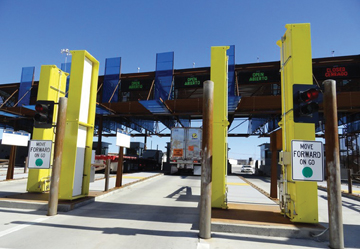“People keep thinking it’s a win-lose thing; that Texas will win and Arizona will lose, or vice versa,” comments Chris Ciruli, COO at Ciruli Brothers, LLC in Nogales. “That is not the case—if you look at the past couple years, you see growth at both borders and this is because there’s more produce coming out of Mexico overall.”
More importantly, Ciruli points out is the “reality that both Texas and Nogales are viable options, and for distributors, it’s not either/or, but they can use both, depending on where the crops are coming from. With the new infrastructure, though, Nogales will be more competitive for the next couple decades. In fact, the wait times over the last few months have been longer in Texas than Nogales.”
The Best of Both Worlds
A growing number of suppliers deal with both Arizona and Texas, shipping from whichever port will have the shortest distance to their customers. “Some of the big players are building warehouses and starting to ship through McAllen,” confirms Tony Garcia, president of Border Transport, Inc., in Nogales. “It’s more cost-effective for their customers in the Midwest and north.”
“There’s truly a ‘rising tide lifts all boats’ dynamic in produce today,” observes Robert Bennen Jr., president of Ta-De Distributing Company in Nogales. “Having the two major ports of entry is a boon to our retail chain customers and their customers alike. With the reopening of the expanded port in Nogales, we’re planning on greater volume through Nogales, while McAllen continues to serve the needs of distributors specifically shipping to the Eastern states.”
“We have seen an uptick in all shipments from Mexico,” agrees Moore, who believes part of the jump in volume can be attributed to increased production from Mexico’s central growing regions.
Freight Costs
Choosing the right port and getting across with minimal delays is only half the battle. Freight rates, especially from Nogales to California, continue to climb.
“Last year, the rates from Nogales to Los Angeles soared, while trucks became increasingly scarce,” recalls Miguel Suarez, sales manager at MAS Melons & Grapes, LLC. “California’s stricter regulations on trucks further limited supply. We ended up buying our own trucks; part of the reason is we ship a lot of product to Japan on future pricing with freight factored in, and the wild rate fluctuations weren’t working well for us.”
Most all distributors have been adjusting to new regulations in California and the nationwide rollout of FMCSA’s more restrictive hours of service rules. “It will be interesting to see how the Department of Transportation rules play out,” says Border Transport’s Garcia.



